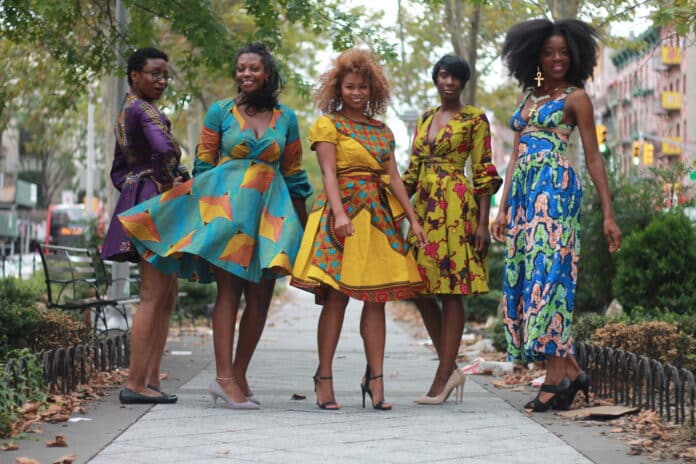African fashion has a rich and diverse history, with a wide range of styles and techniques. Across the continent, people influenced by their local environment and culture use various materials, including cotton, silk, wool, and leather.
They also use different techniques like weaving, dyeing, and embroidery while incorporating traditional symbols and motifs. Before we go further, let’s reel out the stats.
According to Statista, the revenue in the African Fashion market is projected to reach US$6.40bn in 2023. A market volume of US$10.12 billion is projected by 2027 with an expected annual growth rate (CAGR 2023–2027) of 12.14%.
With a projected market volume of US$265.50 billion in 2023, we expect the number of users to amount to 393.6 million by 2027. User penetration will be 20.5% in 2023, and it should hit 28.3% by 2027.
Enough of the stats. Let’s take you on the journey of the African Fashion industry.

Related: Why is casual fashion the need of the hour?
History of African Fashion
“African fashion” is not a monolithic or homogenous concept. Africa is a vast continent with many cultures and traditions. So, the fashion industry in Africa is diverse and growing. There are some broad trends and historical patterns that we can’t ignore.
The earliest evidence of textiles in Africa comes from rock paintings in the Sahara. This dates back to around 6000 BCE. These paintings portrayed people wearing robes and skirts made of woven fabric.
But some of the oldest known textile fragments come from Egypt, dating back to around 4000 BCE. In many parts of Africa, they used textiles for ceremonial and ritual purposes aside from clothing. They also served as currency or to show social status.
Let’s talk about specific regions and cultures.
We start with the kingdom of Kush, the empire on the Middle Nile. The kingdom, now modern-day Sudan, flourished between 1069 BCE and 350 CE. It was one of the first places cotton was cultivated and used for textiles.
The people of Kush were skilled weavers, and they produced a variety of textiles, including fine linen cloth and cotton fabrics. They often decorated their textiles with intricate patterns and designs.
One of the most interesting aspects of fashion in the kingdom of Kush is the role of women. Women were not only skilled weavers; they were active in trade and commerce. And they even held positions of power within the royal court. This is a stark contrast to many other ancient civilizations, where women were relegated to domestic roles.

Let’s move on to the Yoruba people of West Africa.
The Yorubas have a long history of textile production, dating back to at least the 12th century CE. We know them for their Aso Oke, which is hand-woven using a special technique.
They used the cloth for ceremonies such as weddings and coronations. Aside from being highly skilled weavers, the Yorubas are also known for their vibrant and colourful patterns. They use a variety of dyes to create intricate designs, including geometric patterns and symbols.
Next, let’s talk about the Dogon people of Mali. The Dogon people have a rich tradition of textile production that dates back centuries. We know them for their indigo-dyed cloth, which is created using a traditional process that involves fermenting the indigo plant.
The indigo dye is then used to create distinct patterns, which often depict symbols and designs that have special meaning to people.
We know the Hausa people of northern Nigeria for their unique style of dress, which often includes brightly coloured robes and head wraps. They have a rich tradition of embroidery, which is used to decorate their clothing. Aside from their traditional style of dress, the Hausas are known for their leather and metal skills.
The Kuba people in the present-day Democratic Republic of Congo are renowned for their raffia cloth, made from the raffia palm’s fibres.
The cloth is dyed and decorated with well-shaped patterns, often telling stories or representing important symbols. They used the cloth for a variety of purposes, including ceremonial dress and gift-giving.
Related: Nigerian and African Fashion
African Fashion Colonialism

Colonialism had a significant impact on the textile traditions of Africa. The traditions were changed or even lost entirely because of colonisation. Some European colonists introduced new fabrics and techniques that replaced traditional African textiles. While others banned or discouraged the use of traditional textiles and imposed their own cultural values.
In the mid-1800s, when the British colonized East Africa, they introduced a new kind of cloth called Merikani. It was a cheap, mass-produced fabric that quickly became popular in the region. It replaced the traditional kanga fabric that had been used in the region for centuries.
In West Africa, the British and French colonisers introduced a new fabric called Luganda. They made this fabric from a type of plant that grew in Europe, and it was much cheaper than the traditional African fabrics. The British and French encouraged people to use the new fabric, and eventually, it replaced many of the traditional West African textiles.
In South Africa, during the 19th century, the British colonisers introduced a fabric called “shirting”. They made shirtings from machine-spun cotton, and they were very cheap and easy to produce. By the 20th century, most of the traditional weaving techniques had been lost, and shirting had become the dominant fabric in the region.
In North Africa, specifically Egypt, the French colonisers introduced a new fabric called Habutai. They made it from silk, and it quickly became popular with the upper classes. It replaced the traditional Egyptian fabrics, which were made from cotton or linen. The Egyptians also adopted French styles of dress, such as corsets and hoop skirts.
The Spanish colonisers introduced a new fabric called “fustian” to Morocco. They made it from a blend of cotton and linen, and it was very durable and easy to clean.
The Spanish also introduced new weaving techniques and dyes, which were used to create a new style of Moroccan textile. This new style differed from the traditional Moroccan textiles, and it became very popular.
Related: Trends That Defined ’90s Hip Hop Fashion for Men and Women
Traditional African Attire
Ethnic Styles and Influences
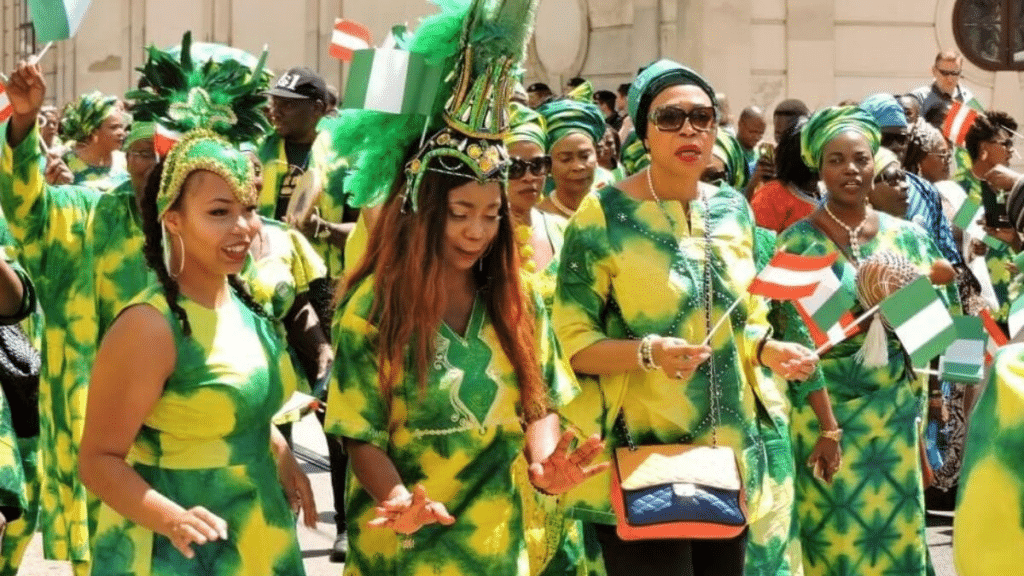
There are so many ethnic styles and influences on traditional African attire. It really depends on which region of Africa you’re looking at, as each region has its own unique style. However, there are some common features that can be found across many regions.
For example, bright colours, bold patterns, and fancy beading are common features of traditional African attire. There’s also often a strong focus on symbols and meanings in the designs.
The Yoruba and Igbo cultures often influenced West African styles. In the Yoruba culture, there’s a strong focus on bright colours and obscure patterns. The Igbo culture also emphasises bright colours, but it also uses a lot of textured fabrics and earth tones.
Both cultures use a lot of natural materials, like raffia, cotton, and leather. The Yorubas often wear a Gele, which is a large head wrap. The Igbo people often wear Isiagu, which is a colourful shirt with bold patterns.
The Swahili culture, which is found in countries like Kenya, Tanzania, and Uganda, influenced East African styles. One of the most well-known pieces of East African attire is the kanga. The kanga is a rectangular piece of cloth that is worn as a wrap dress.
It features a border with a proverb or saying in Swahili. They wore the kanga with a matching headscarf called a khanga.
There are also some interesting traditional garments from Central Africa. In that part of the continent, there are a wide variety of ethnic groups, each with their own style of dress. However, one style that is common across many of these groups is called a Pagne.
The Pagne is a rectangular cloth that is wrapped around the waist and tied at the side. It is made from cotton or silk, and they adorned it with beads, shells, or other embellishments. They also made some Pagne from bark cloth, which is a traditional fabric made from the bark of trees.
Cultural significance

For many people in Africa, traditional clothing is not just about fashion. It is a way to express cultural identity, religious beliefs, and other aspects of life. For example, the Yorubas wear the Agbada – a long robe that is worn for special occasions.
The Agbada is not only a symbol of status and wealth, but it also has religious significance. One of which is connecting with the spirits and ancestors.
In many parts of Africa, colour is also a very important aspect of traditional clothing. The colours of the kanga in East Africa often have symbolic meanings. The colour red is associated with passion, while yellow is associated with joy and wealth. Green is a sign of hope, while blue is associated with loyalty and trust.
Aside from colours, patterns also have symbolic meanings. A zig-zag pattern represents lightning, while a curved design represents a rainbow. We can find these patterns in many traditional garments across Africa.
But then, traditional African attire is not static. It has grown and changed over time, influenced by factors like globalization and urbanization. Many people in Africa now wear a mix of traditional and modern clothing. They might wear a kanga, but pair it with jeans. This mixing of styles is a way to express both cultural identity and modernity.
One of the most interesting examples of the evolution of traditional African attire is the kitenge. The kitenge is a wax-printed fabric that was originally created in Indonesia. Dutch traders brought it to East Africa in the 19th century.
Later, the kitenge was adopted by many cultures in Africa. It’s now a symbol of African fashion. The kitenge is a perfect example of how traditional African attire has been influenced by global trade and exchange.
Let’s talk about the boubou, which is a traditional robe that is popular in West Africa. It originated in Senegal, where it was worn by men. Over time, the boubou became popular with both men and women, and it is now a symbol of Senegalese culture.
Aside from Senegal, the boubou is also worn in other countries like Mali, Guinea, and Ivory Coast. Each country has its own unique variations of the boubou, and the styles are constantly developing.
Fun Fact: Is Juju Magic Real? Attempting To Uncover The Truth Behind African Magic
Contemporary African Fashion Trends
Modern Interpretations

Contemporary African fashion is constantly growing and being reinterpreted by designers. One great example is the work of Nigerian designer Duro Olowu. His work combines traditional Nigerian textiles with modern silhouettes and Western fabrics.
He was called the “new king of African fashion” by Vogue magazine. Olowu is just one of many contemporary designers who are redefining what African fashion can be.
Another example is the work of South African designer Laduma Ngxokolo. He is known for his use of traditional Xhosa beadwork in his designs. They have featured his work in exhibitions at the Victoria and Albert Museum in London, and the Metropolitan Museum of Art in New York. He has collaborated with brands like Nike and Puma.
Social media has allowed African designers to connect with a global audience, other designers, and creatives from around the world. The internet has made possible a global community of African fashion designers. This has fostered an exchange of ideas and collaborations.
Global Impact
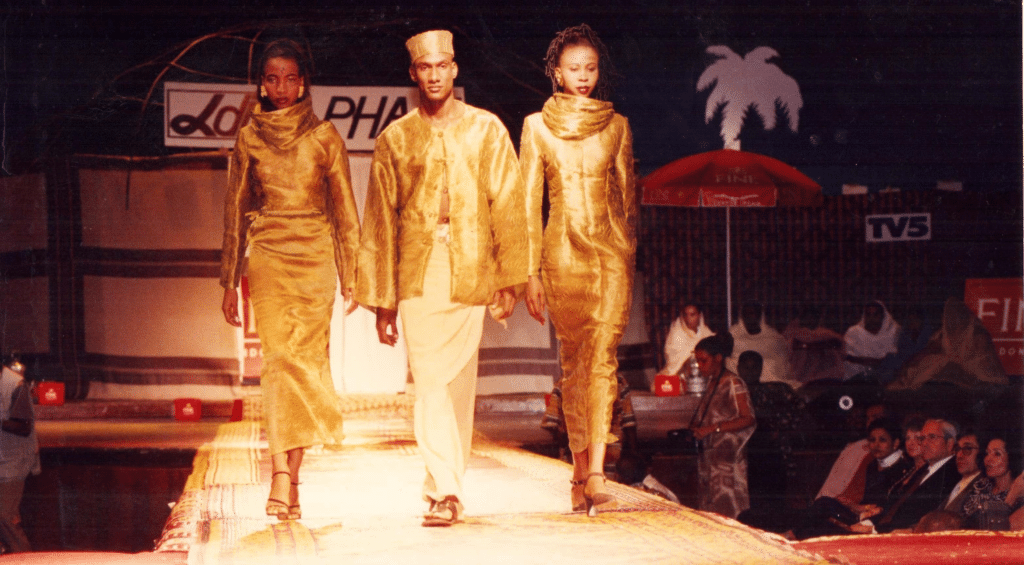
African designers are now being recognised on the international stage, and their work is having a major impact on the global fashion industry. The Nigerian-born designer Maki Oh has been credited with bringing African-inspired prints and silhouettes to the international runway. Celebrities like Solange Knowles and Michelle Obama have worn her work.
Other African designers like Rich Mnisi, Thebe Magugu, and Hanifa have also gained international acceptance. These designers are not only making a name for themselves, but they are also inspiring other designers and fashion enthusiasts around the world. They are helping to redefine what it means to be stylish and fashionable.
The future of fashion is definitely global. And we’re seeing more and more designers from around the world, including Africa, being appreciated on the international stage. This is a really exciting time for fashion, and it’s great to see so many cultures and styles being celebrated.
Related: 27 Latest Lehenga Blouse Designs to Try in 2023
African Fabrics and Textiles
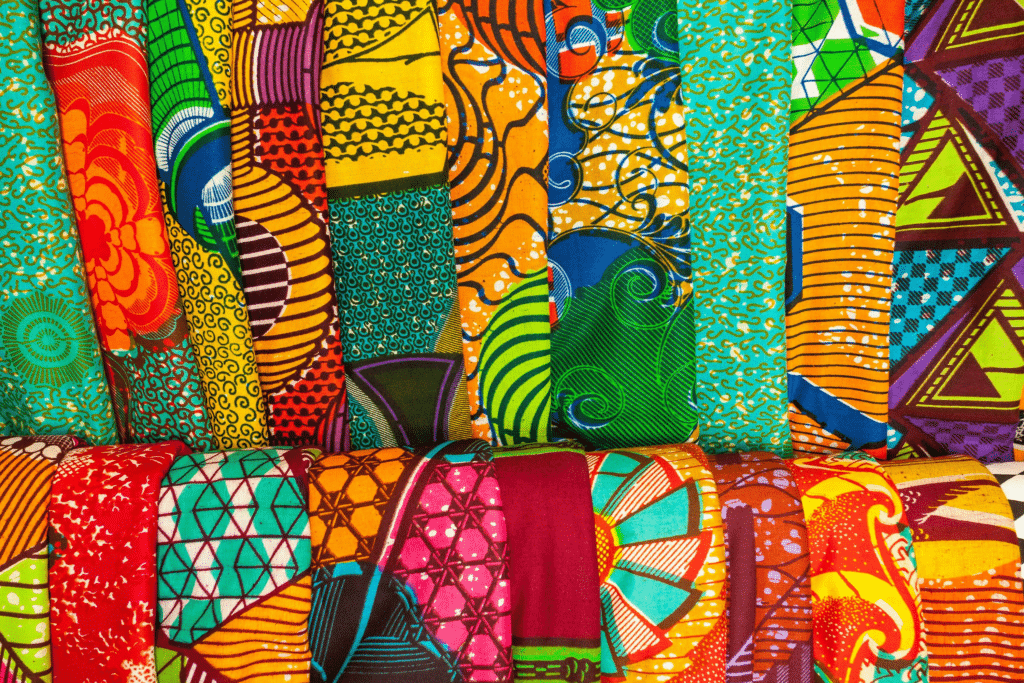
African fabrics and textiles are a key part of the continent’s fashion industry, and there is a lot of potential for growth. Many traditional fabrics, like Ankara wax prints, are already popular around the world. African fashion has a wide variety of fabrics and textiles. Some of the most popular ones include:
- Ankara wax print (Nigeria, Ghana, Togo)
- Kente cloth (Ghana)
- Kuba cloth (Democratic Republic of the Congo)
- Aso-oke (Nigeria)
- Mud cloth (Mali)
- Kente Asafo (Ghana)
- Bogolan (Mali)
Bold colours and elaborate designs distinguish these fabrics.
Related: 15+ Latest Designer Clothes for Guys in 2023
African Fashion Designers
Icons of the Industry
There are so many remarkable African fashion designers who have made a big impact on the industry. Some of the most iconic ones include:
- Alphadi (Niger)
- Amine Bendriouich (Morocco)
- Folake Coker (Nigeria)
- Nkhensani Nkosi (South Africa)
- Rich Mnisi (South Africa)
- Laduma Ngxokolo (South Africa)

These designers have all been recognised for their innovative designs and their ability to blend traditional African styles with modern trends.
Emerging Talents
Aside from the well-established designers, there are also many emerging talents in the African fashion industry. Here are just a few of the up-and-coming designers to watch:
- Tizita Balemlay (Ethiopia)
- Taibo Bacar (Mozambique)
- Nkwo Onwuka (Nigeria)
- House of Bantu (South Africa)
- Christie Brown (Ghana)
- Uju Offiah (Nigeria)
These designers are all doing exciting things in the world of African fashion.
Related: Latest Ankara Styles for Fashionistas in 2023
Fashion Shows and Events
Celebrating African Style
African fashion shows and events have become important platforms for celebrating and showcasing the rich and diverse styles, talents, and creativity emerging from the continent.
These events provide opportunities for both established and emerging designers to present their collections, connect with global audiences, and contribute to the growth of the African fashion industry. Here are some notable African fashion shows and events:
- Lagos Fashion Week
- South Africa Fashion Week
- African Fashion International (AFI) Fashion Week (Various African Cities)
- Arise Fashion Week (Nigeria)
- Accra Fashion Week
- Swahili Fashion Week (Tanzania)
- Kigali Fashion Week
- Gaborone Fashion Weekend (Botswana)
- African Fashion Reception (Various Locations)
- Design Indaba (South Africa)

Celebrating African Style on International Platforms
African fashion has gained recognition on the international stage through participation in various fashion shows and events. These platforms provide African designers with opportunities to showcase their talent, creativity, and unique styles to a global audience. Here are some international fashion shows and events that celebrate African style:
- Paris Fashion Week
- New York Fashion Week
- London Fashion Week
- Milan Fashion Week
- Berlin Fashion Week
- Africa Fashion International (AFI) Showcase (Various International Locations)
- Ethical Fashion Show (Various International Locations)
- International Runway Dubai (UAE)
- African Fashion Reception (Various International Locations)
- Global Fashion Exchange (Various International Locations)
Related: 45+ African Lace Styles for Weddings 2023
Incorporating African Fashion
Wardrobe Inspiration
There are many ways to incorporate African fashion into your wardrobe. For example, you could try adding some African-inspired accessories, like beaded jewellery or a head wrap.
You could also try wearing bold colours and patterns or incorporating traditional African fabrics into your outfits. And you don’t have to go all out – even a small touch of African style can make a big impact.
Styling Tips
The first tip is to think about the silhouette. African-inspired garments often have a loose, flowing silhouette, which can be quite different from the fitted styles that are popular in Western fashion. If you’re new to this style, try starting with loose-fitting tops or dresses.
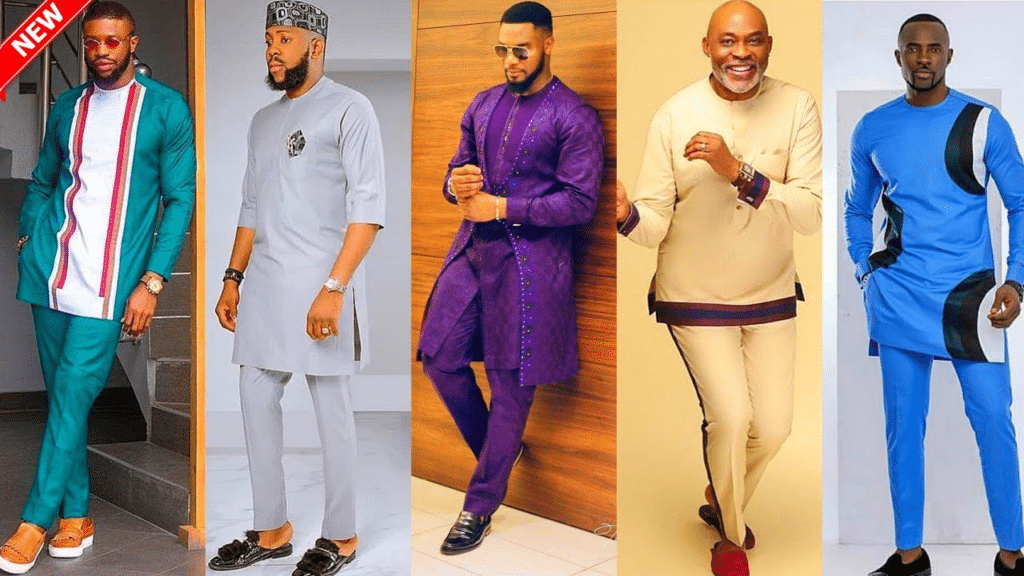
You can also experiment with draping and layering to create interesting shapes and lines. Another tip is to pay attention to the details. African fabrics often have intricate embroidery and beading, adding visual interest to an outfit.
In terms of colour and pattern, don’t be afraid to mix and match. The bold, bright colours and patterns that are common in African fashion can be a great way to add some personality to your look. Try pairing a patterned dress with a solid-coloured jacket, or mix and match distinct patterns and colours in your accessories.
When it comes to shoes, African-inspired footwear often features bold, geometric designs and vibrant colours. Try pairing them with a simple outfit to let the shoes make a statement.
Related: African Wears for Men
Socioeconomic Impact of African Fashion
African fashion has a significant socioeconomic impact on the continent and beyond. It influences various aspects of society, including the economy, employment, empowerment, and cultural preservation. Here are some key ways in which African fashion contributes to socioeconomic development:
1. Job Creation
The African fashion industry generates employment opportunities across the value chain. This includes designers, tailors, weavers, dyers, artisans, models, marketers, and retail workers. The sector provides jobs for both skilled and unskilled labour, particularly for women, who comprise a substantial portion of the workforce.
2. Microenterprises and Entrepreneurship
African fashion supports a thriving ecosystem of microenterprises and small businesses. Many African artisans and designers operate their own businesses, contributing to economic growth and innovation at the grassroots level.
3. Economic Growth
The fashion industry, including textiles and apparel, contributes significantly to the gross domestic product (GDP) of many African countries. It attracts foreign investment and boosts local economies by creating demand for raw materials, manufacturing, and retail.
4. Promotion of Local Textile Industries
The African fashion industry promotes local textile production and processing. African designers often source fabrics locally, supporting textile mills and artisans who produce traditional textiles such as Ankara, Kente, and mud cloth.
5. Cultural Preservation
African fashion plays a crucial role in preserving and celebrating African cultures and traditions. It allows designers to reinterpret traditional clothing, textiles, and patterns in contemporary designs, ensuring that cultural heritage is not lost.
6. Global Export Market
African fashion brands and designers are gaining recognition on the global stage. By exporting their products, they contribute to foreign exchange earnings for their countries and promote a positive image of Africa worldwide.
7. Skills Development
The fashion industry provides opportunities for skills development and vocational training. Many organisations and initiatives offer training programmes to empower individuals, especially women, and youth, with tailoring, design, and entrepreneurial skills.
8. Women Empowerment
African fashion has been a source of empowerment for women. Many female entrepreneurs have built successful fashion businesses, and women are prominent in various roles within the industry, from designers and models to artisans and seamstresses.
9. Sustainable Practices
African fashion is increasingly incorporating sustainable and ethical practices. This includes using eco-friendly materials, supporting fair trade, and promoting ethical manufacturing, contributing to a more sustainable and responsible industry.
10. Tourism and Cultural Exchange
African fashion festivals and events attract tourists and foster cultural exchange. These events showcase African creativity and traditions, attracting visitors and boosting tourism.

11. Youth Engagement
African fashion appeals to the younger generation and encourages them to explore entrepreneurship and creative careers. It inspires youth to harness their talents and contribute to the economy.
12. Fostering Pan-African Unity
African fashion often incorporates designs and materials from various African countries, promoting unity and collaboration among nations on the continent.
Overall, African fashion goes beyond aesthetics; it is a dynamic sector that contributes significantly to socio-economic development, job creation, cultural preservation, and empowerment. As the industry continues to grow and evolve, its impact on Africa’s economy and society is expected to become even more pronounced.
Related: 7+ Trendy Native Styles for Men (2023)
Challenges of African Fashion
While African fashion has seen remarkable growth and recognition in recent years, it still faces several challenges that hinder its full potential. Some of the key challenges include:
1. Limited Access to Capital
Many African fashion entrepreneurs struggle to secure the necessary capital to start or expand their businesses. Lack of funding can impede the development of design studios, production facilities, and marketing efforts.
2. Infrastructure and Supply Chain Issues
Inadequate infrastructure, including transportation and logistics, can lead to delays and increased costs in the production and distribution of fashion products. Inefficient supply chains can hinder the industry’s growth and competitiveness.
3. Inadequate Skills and Training
While there is a wealth of creative talent in Africa, many fashion professionals lack formal training and technical skills. Access to quality fashion education and training programs is limited in some regions.
4. Intellectual Property and Copyright Challenges
Intellectual property protection can be weak, making it difficult for designers to safeguard their designs and brands. Copycats and counterfeit products can negatively impact original designers.
5. Access to Markets
Expanding beyond local markets can be challenging for African fashion brands due to trade barriers, lack of market knowledge, and difficulties in accessing global retail channels.

6. Inadequate Infrastructure for E-commerce
E-commerce is essential for reaching a global audience, but limited internet penetration, unreliable online payment systems, and logistical challenges can impede the growth of online fashion businesses.
7. Textile and Fabric Challenges
Although Africa is rich in textiles and fabrics, the continent still relies heavily on imported materials. Domestic textile production faces challenges such as outdated machinery, inconsistent quality, and limited variety.
8. Regulatory Barriers
Complex and often inconsistent regulatory environments across African countries can pose challenges for fashion entrepreneurs. Navigating bureaucracy and regulatory hurdles can be time-consuming and costly.
9. Lack of Access to Markets for Artisans
Traditional artisans and craft workers who produce unique and culturally significant fashion items often struggle to find access to larger markets, limiting their income potential.
10. Sustainability and Ethical Practices
The fashion industry’s environmental impact and ethical practices are increasingly important global concerns. African fashion faces challenges in adopting sustainable and eco-friendly practices, such as using organic materials and responsible manufacturing processes.
11. Competition
As the African fashion industry grows, competition within the sector intensifies. Local designers and brands must find ways to differentiate themselves and compete with international fashion labels.
12. Limited Retail Infrastructure
Many African countries lack modern retail infrastructure, making it challenging for fashion brands to showcase and sell their products in physical stores.
Despite these challenges, the African fashion industry continues to thrive and innovate. Many organisations, governments, and fashion initiatives are actively working to address these issues, supporting the growth and sustainability of the industry and providing opportunities for African fashion to shine on the global stage.
Related: 76+ Latest Ankara styles for kids in 2023
Opportunities in African Fashion
The African fashion industry presents opportunities for growth, innovation, and economic development. As the industry continues to grow, several key opportunities emerge:
1. Economic Growth
African fashion has the potential to become a significant contributor to the continent’s economic growth. The industry can stimulate job creation and enhance economic stability by leveraging its creativity and diverse textile resources.
2. Youth Employment
With a young and growing population, Africa can harness its fashion industry to provide employment opportunities for youth, reducing unemployment rates and supporting economic empowerment.
3. Cultural Exchange
African fashion is a powerful tool for cultural exchange. It allows the continent to share its rich and diverse cultural heritage while embracing global influences and trends.
4. Sustainable Fashion
African fashion can lead the way in sustainable and ethical practices. The use of organic materials, eco-friendly production processes, and fair trade can set African fashion brands apart in the global market.
5. African Textile Industry
The fashion industry can drive the growth of the African textile industry by promoting local production and sustainable practices. This can reduce dependency on imported fabrics and boost domestic manufacturing.
6. Global Market Access
The increasing interest in African fashion worldwide presents an opportunity for designers and brands to access global markets. E-commerce platforms and international collaborations can facilitate this process.
7. Cultural Preservation
African fashion can play a vital role in preserving and promoting traditional craftsmanship and textiles. This preserves cultural heritage and offers artisans opportunities to generate income.
8. Fashion Education
The demand for fashion education and training programs in Africa is rising. Institutions that offer quality fashion education can fill this gap and equip future professionals with the skills they need.
9. African Luxury Brands
Africa has the potential to create and market luxury brands that draw inspiration from its rich cultural heritage and materials. These brands can compete on the global stage with established luxury labels.
10. Collaborations and Partnerships
Partnerships between African designers and international fashion brands can open up new markets and provide opportunities for knowledge exchange and skill development.

11. African Diaspora
The African diaspora is a significant market for African fashion. Designers and brands can tap into this market by creating products that resonate with the diaspora’s cultural roots.
12. Technology and Innovation
African fashion can leverage technology for design, production, and marketing. E-commerce, social media, and digital platforms can help brands reach wider audiences and streamline operations.
13. Fashion Tourism
Fashion events, such as fashion weeks and exhibitions, can attract tourists interested in experiencing African culture and fashion. This can boost the tourism industry and create additional revenue streams.
14. Exporting African Fabrics
African textile producers can expand their exports by supplying fabrics to global fashion brands and designers interested in incorporating African textiles into their collections.
15. Investment and Support
Increased investment from governments, private sector entities, and international organisations can provide funding, infrastructure, and support to nurture the growth of the African fashion industry.
African fashion is poised for growth and transformation. With the right strategies, collaborations, and investments, the industry can capitalise on these opportunities to become a global leader in fashion while simultaneously contributing to economic development and cultural preservation on the continent.
Related: Best Work Dresses
The Future of African Fashion
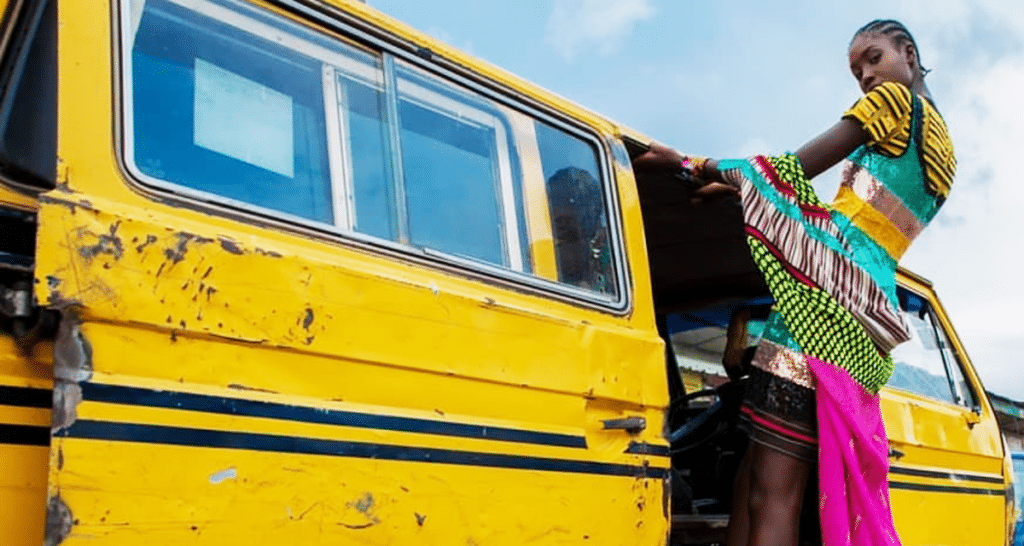
The future of African fashion is promising and likely to be characterised by several key trends and developments:
1. Global Recognition and Influence
African fashion will continue to gain recognition and influence on the global stage. African designers and brands will play a more significant role in shaping international fashion trends.
2. Sustainable and Ethical Practices
The industry will increasingly adopt sustainable and ethical practices, incorporating eco-friendly materials, responsible production processes, and fair trade. African fashion will be at the forefront of sustainable fashion movements.
3. Digital Transformation
Technology will play a crucial role in the future of African fashion. E-commerce platforms, social media, and digital marketing will enable designers and brands to reach a global audience and streamline their operations.
4. Innovation in Textiles
African fashion will see innovation in textiles and materials. Designers will explore new textures, techniques, and materials that reflect the continent’s creativity and diversity.
5. Cultural Preservation
The industry will continue to celebrate and preserve African culture and heritage. Designers will reinterpret traditional clothing, textiles, and patterns in contemporary designs.
6. Collaborations and Partnerships
African designers will collaborate with international fashion brands, artists, and influencers, leading to more global exposure and cross-cultural exchanges.
7. Access to Markets
Improved trade agreements, transportation infrastructure, and market access will facilitate the expansion of African fashion brands into international markets.
8. Fashion Education
Institutions offering quality fashion education and training programs will proliferate, helping to develop a new generation of skilled fashion professionals.
9. Entrepreneurship and Microenterprises
The growth of microenterprises and small businesses within the fashion industry will provide employment opportunities and stimulate economic growth at the grassroots level.
10. Fashion Tourism
Fashion events and exhibitions will become significant attractions for tourists interested in experiencing African culture and fashion.
11. African Luxury Brands
Africa has the potential to create and market luxury brands that draw inspiration from its rich cultural heritage and materials.
12. Youth Empowerment
The fashion industry will empower young African designers and entrepreneurs, harnessing the creative energy of the continent’s youth.
13. African Diaspora Market
African fashion will continue to cater to the African diaspora market by creating products that resonate with the diaspora’s cultural roots.
14. Fashion Innovation Hubs
Fashion innovation hubs and incubators will support emerging talent, providing resources and mentorship to help designers succeed.
15. Cultural Exchanges
African fashion will engage in more cultural exchanges, collaborating with designers and brands from other continents to create diverse and inclusive fashion collections.
In summary, the future of African fashion is dynamic, innovative, and diverse. It will continue to celebrate Africa’s rich cultural heritage while embracing global influences. As the industry develops, it has the potential to drive economic growth, empower communities, and contribute to sustainable and ethical fashion practices.
Related: 19+ Trendy Lace Blouse and Wrapper Styles in 2023
Conclusion
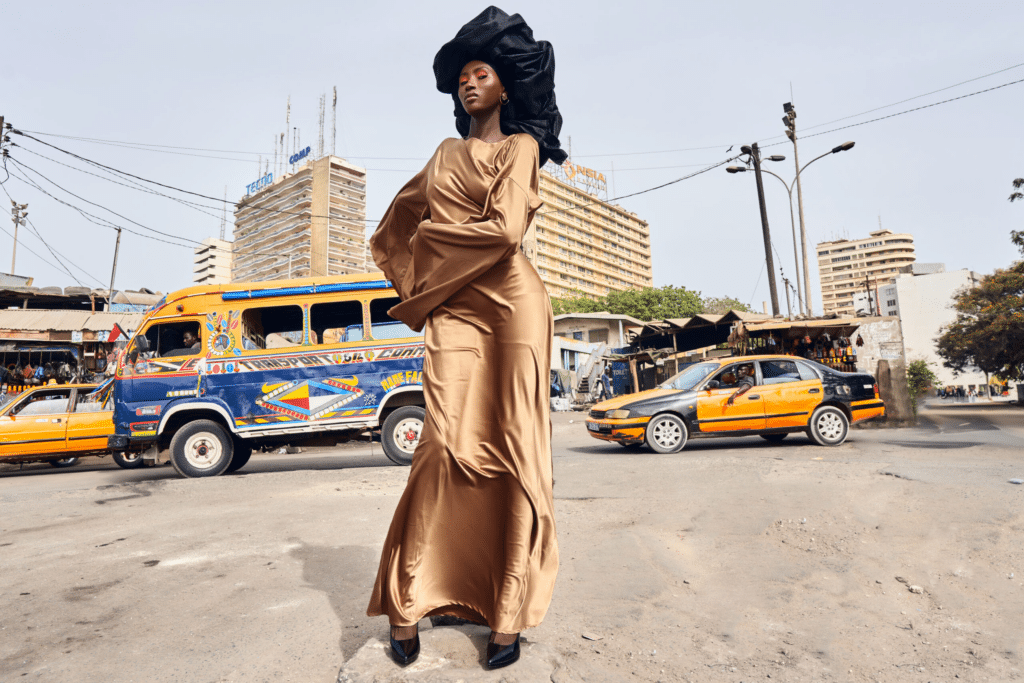
It’s important to emphasise the diversity and creativity of African designers and their ability to blend traditional and modern elements in their work.
As we said earlier, African fashion is not a monolithic style, but a rich and varied tradition that is constantly growing and growing. African fashion is not just about style – it’s also about cultural pride, self-expression, and social change.
FAQs About African Fashion
What kind of clothes do they wear in Africa?
Clothing styles vary widely across Africa. But there are some common elements that can be found in many traditional garments, such as bright colours, bold patterns, and loose, flowing silhouettes. Some of the most well-known traditional garments include the boubou robe (worn in West Africa), the kanga (worn in East Africa), the kitenge (worn in Central Africa), and the dashiki (worn in many parts of Africa).
Where is the fashion capital in Africa?
The fashion capital of Africa is definitely Lagos, Nigeria. Lagos is home to a thriving fashion industry, with many local designers, fashion magazines, and fashion events. The city is also a hub for international designers looking to tap into the African market.
Aside from Lagos, other African cities that are becoming important centres for fashion include Nairobi, Accra, Cape Town, and Johannesburg.
What is African fashion colonialism?
“African fashion colonialism” refers to how Western fashion has been imposed on African people without taking into account their own unique cultures and traditions. In the past, Western fashion companies often created designs based on Western stereotypes of Africa, such as using tribal prints and animal motifs. This led to a homogenisation of African fashion and a loss of individuality and creativity. However, in recent years, there has been a push for African designers to reclaim their own fashion traditions and create styles that reflect their unique identities.
What is the biggest fashion house in Africa?
The biggest fashion house in Africa is arguably Deola Sagoe, which was founded in Lagos, Nigeria in 1986. Deola Sagoe is known for its luxurious designs, which often feature intricate beading and embroidery. The brand has been shown at many international fashion shows, including London Fashion Week, Paris Fashion Week, and New York Fashion Week.
Aside from Deola Sagoe, other notable African fashion houses include Maki Oh, Duro Olowu, Tiffany Amber, and Loza Maléombho.



